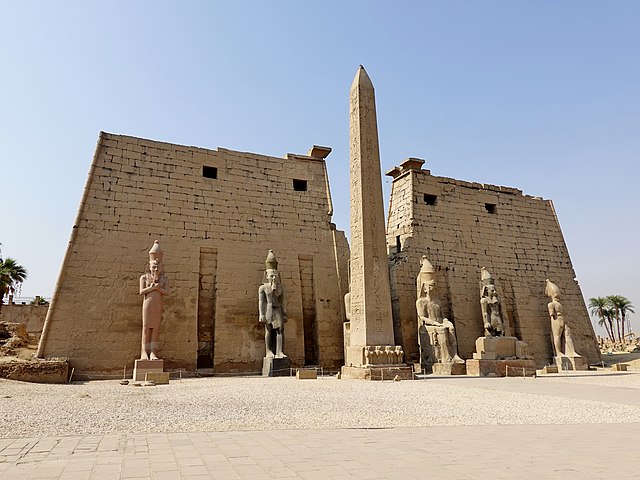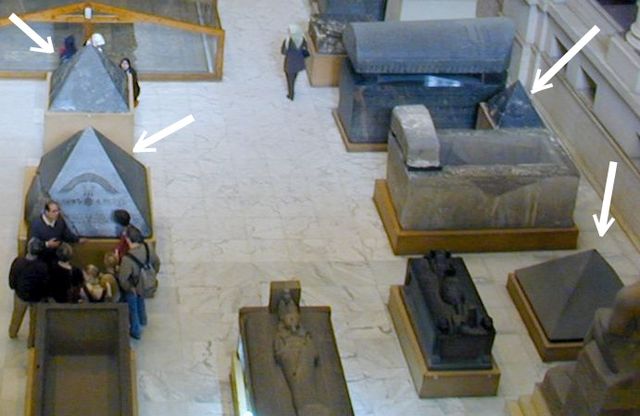An obelisk is a tall, four-sided, narrow tapering monument which ends in a pyramid-like shape or pyramidion at the top. Originally constructed by Ancient Egyptians and called tekhenu, the Greeks used the Greek term obeliskos to describe them, and this word passed into Latin and ultimately English. Though William Thomas used the term correctly in his Historie of Italie of 1549, by the late sixteenth century, Shakespeare failed to distinguish between pyramids and obelisks in his plays and sonnets. Ancient obelisks are monolithic and consist of a single stone; most modern obelisks are made of several stones.
One of the two Luxor Obelisks, on the Place de la Concorde in Paris; a red granite monolithic column, 23 metres (75 feet) high, including the base, which weighs over 250 metric tons (280 short tons).
Pylon of the Temple of Luxor with the remaining Luxor Obelisk in front (the second is today on the Place de la Concorde in Paris)
Obelisk of Pharaoh Senusret I, Al-Maalla area of Al-Matariyyah district in modern Heliopolis, Egypt
Tip of Hatshepsut's fallen obelisk, Karnak Temple Complex, Luxor, Egypt
A pyramidion is the capstone of an Egyptian pyramid or the upper section of an obelisk. Speakers of the Ancient Egyptian language referred to pyramidia as benbenet and associated the pyramid as a whole with the sacred benben stone.
Close-up of the Pyramidion of the Pyramid of Amenemhat III at Dahshur. Egyptian Museum, Cairo
The four pyramidia at the Egyptian Museum, Cairo
The restored pyramidion of the Red Pyramid at Dashur, on display beside the pyramid
Pyramidion of the chapel of Nesnubhotep, limestone with relief of a scarab and adoring baboons, 26th Dynasty, Abydos








